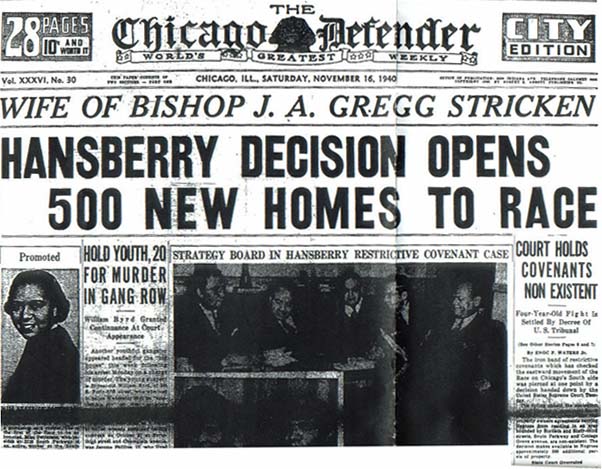
Is this still a true? Apparently for Renisha and Jonathan, it isn’t.
The US Supreme Court, on November 13, 1940, ruled in Hansberry v. Lee that whites cannot bar African Americans from white neighborhoods.

In 1937, businessman Carl Hansberry, Lorraine’s father, defied the Woodlawn Property Owners’ Association by successfully negotiating the purchase of a home at 6140 Rhodes Avenue. At about the same time Harry H. Pace, a prominent Negro attorney and president of the Supreme Liberty Life Insurance Company, purchased a building just east of South Park Way on Sixtieth Street. Anna M. Lee, a white signatory of the restrictive covenant, filed suit against Hansberry and Pace for $100,000.
When the circuit court ruled in favor of the plaintiffs for equity, the defendants carried their fight to the Supreme Court of Illinois, which also upheld the legality of the restrictive covenant, by a vote of six to one, and ordered confiscation of Hansberry’s property. The Supreme Court of the United States reversed the decision but did not hold that restrictive covenants are void. It ruled for Hansberry on a legal technicality, that an agreement between two property owners respecting the number of signatories to the restrictive covenant agreement is fraudulent.
Acclaimed writer Lorraine Hansberry was nearly eight years old when her father, Carl Hansberry, decided to purchase a three-flat at 6140 S. Rhodes in the white neighborhood of Woodlawn, and challenge the restrictive housing covenant that kept blacks from renting, leasing, or buying property in the community. Shortly after moving in, the Hansberrys were evicted based on the covenant. Mr. Hansberry then waged a three-year legal battle for the right to live in his home. The case,Hansberry vs. Lee, resulted in a 1940 Supreme Court decision that helped to end racially discriminatory housing covenants across the city of Chicago.
